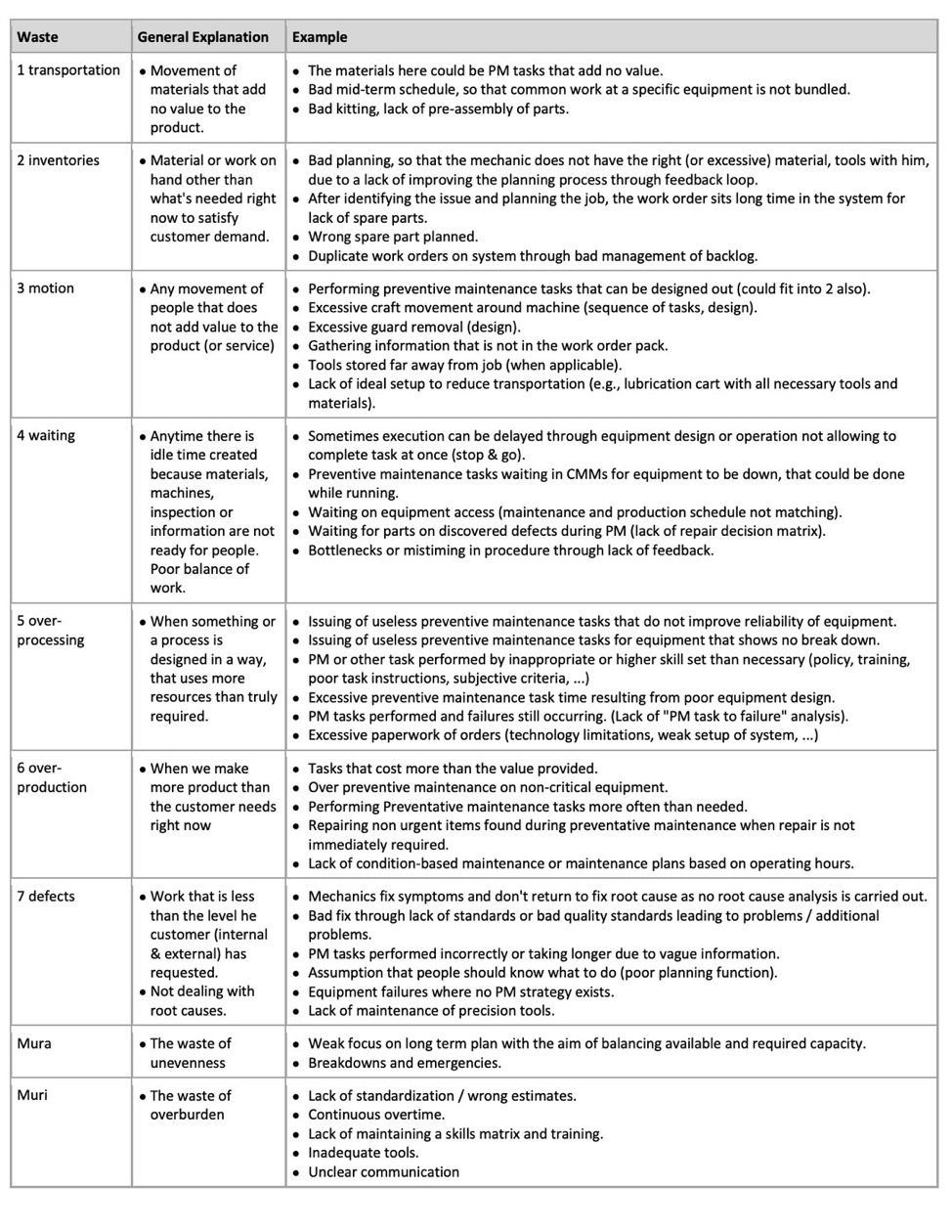How to manage waste in maintenance
Thomas Kühnapfel, one of our InSpirit members, gives us his interesting point of view :
“I am always fascinated by the lean focus on waste in daily business. I believe using the same “lean glasses” for the maintenance process is beneficial not only for the business but also for the environment. However, the lean maintenance approach cannot simply be a mirror image of a lean production approach due to major differences between the two. Therefore the lean thinking in maintenance needs to be developed and not mirrored.
For lean manufacturing to be successful, maintenance has to be lean too. Keeping the same basic definition, although the environment is different, improves the communication with production and other functions. Lean Maintenance differs from Lean Manufacturing though, e.g. because the maintenance work must be planned, where the manufacturing work can be “pulled” by customer orders: Interestingly there is one similarity: both require careful scheduling based on the actual capabilities of the machines, whether to produce or to go through preventive maintenance. Still finding Muda (inconsistent or uneven application of time and/or resources across a process, common in reactive maintenance) or Muri (when you put your team under stress by demanding unreasonable or unnecessary work that exceeds their capacity, which can be avoided with a good planning process) and eliminating it should be part of everyone’s daily business.
The focus for maintenance could even be split into processing work orders and executing maintenance.”
Would you say that the whole lean thinking is a more common topic for production personnel or maintenance personnel ?
There are many articles about waste in maintenance and this is great. Would a maintenance department benefit from building a small database, with examples from their own business and culture, and having the Leader remind his team and periodically add/discuss real-life examples from his mechanics and electricians? Some basics will always be the same, but depending on business and culture there could be little differences. And most important discussing these topics and developing solutions with the team will help the maintenance department to develop further.
An initial table could look like this :



